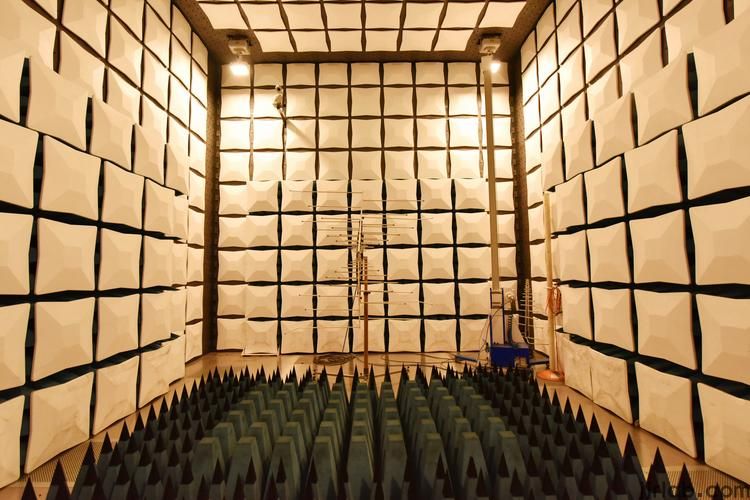
EU 2.4G Products CE-RED Directive
In February this year, the European Union officially released the standards for the 2.4G products (WIFI, BT, ZigBee) under the RED directive. Manufacturers can now start applying for the RED NB certificates!

What are the differences between the new and old directives?
CE-RTTE Directive Standards:
EMC: ETSI EN301489-1 V1.9.2; ETSI EN301489-17V2.2.1
RF: ETSI EN300328 V1.9.1
SAR: ETSI en62479
LVD: ETSI en60950/EN60065
CE-RED Directive Standards:
EMC: ETSI EN301489-1 V2.1.1; ETSI EN301489-17V3.1.1
RF: ETSI EN300328 V2.1.1
SAR: ETSI EN62479
LVD: ETSI EN60950/EN60065
From the standards, we can see that the EMC and RF testing standards in the RED directive have been updated. In terms of standard testing content, EN 300328 V2.1.1 is stricter than V1.9.1, both in terms of limitations and testing methods. We remind manufacturers to consider more technical specifications during product development to meet later certification standards.
What are the differences between V2.1.1 (RED) and V1.9.1 (R&TTE) standards?
After the release of EN300328 V2.1.1, we compared it with the currently applied V1.9.1 standards, and here are the distinctions:
1. RegULatory version corresponds to different directives: V1.9.1 is R&TTE (1995/5/EC), while the new V2.1.1 is RED (2014/53/EU);
2. The receiver frequency band is defined as 2400-2483.5 MHz;
3. Adaptivity test requirements:
a. The definition (TL) can be corrected by the gain (G) of the (receiving) antenna assembly, but beamforming gain (Y) should not be considered.
b. The TL calculation formula has changed to TL = -70 dBm/MHz + 10 x log10 (100mW/Pout).
c. Section 5.4.6.2.1.2 adaptive frequency hopping devices using DAA and section 5.4.6.2.1.3 non-FHSS modulation, non-LBT based adaptive devices require testing for only one link (antenna port) of systems using multiple receive chains; all other receiver inputs should be terminated.
4. Receiver blocking tests: In V1.9.1, there was only one requirement for frequency hopping and non-frequency hopping technologies, while the new version distinguishes three types with different requirements.
5. Power spectral density divides products into two options: Option 1 & Option 2, and changes the scan time.
6. For TX/RX radio frequency reception modes, RSE clearly defines the differences between ERP and EIRP; E.R.P applies to RF below 1GHz, and E.I.R.P applies to RF above 1 GHz.
7. Frequency hopping interval test:
a. The scan time in Option 1, step 1 of section 5.4.5.2.1.2 has changed from 1s to automatic;
b. In Option 1, step 3, the frequency hopping interval requirement has changed from -20 dBc Channel Bandwidth to Occupied Channel Bandwidth;
c. In Option 2, step 1, the detection method in section 5.4.5.2.1.3 has changed from RMS to Max Peak, and the scan time has changed from 1s to automatic.
8. Receiver blocking: This is the most notable change in the V2.1.1 standard. In V1.8.1 and V1.9.1, receiver blocking tests were required only for adaptive devices with an e.i.r.p. greater than 10dBm, but in V2.1.1, testing is mandatory, with definitions and limits being stricter. Additionally, the variety of receivers has increased.
Test Requirements:
After applying the standard test methods and corresponding blocking signals, the receiver's packet error rate (PER) must be less than or equal to 10%. Manufacturers may declare alternative performance standards, but these must meet the intended use requirements of the product. Tests must add blocking signals at different frequencies and power levels based on the type of receiver, with the requirement that the PER is less than 10%.
How long can CE-RTTE directives still be used for 2.4G products?
The EU announced the latest CE-RED directive in June 2016, which clearly stated that the CE-RTTE directive would expire in June 2017.
What if a 2.4G product fails CE-RED testing?
Since the latest CE-RED directive, which includes the strict receiver tests required by 300328 V2.1.1, most products will fail testing (unless we are dealing with pure transmit products without reception capabilities).
Chinese JJR Laboratory instruments are now capable of meeting the V2.1.1 testing standards, and you can come to our facility for testing and rectification.
Email:hello@jjrlab.com
Write your message here and send it to us
 What Are the Testing Items of California Propositi
What Are the Testing Items of California Propositi
 E-Cigarette EU TPD Testing
E-Cigarette EU TPD Testing
 Testing Certification for E-cigarettes Exported to
Testing Certification for E-cigarettes Exported to
 What is Amazon US CPC Certification?
What is Amazon US CPC Certification?
 UK Toy Safety Regulation Standard EN 71-13
UK Toy Safety Regulation Standard EN 71-13
 What is EU UFI Registration?
What is EU UFI Registration?
 EU UFI Registration for E-cigarette E-liquid
EU UFI Registration for E-cigarette E-liquid
 How to get the MSDS Report for Electronic Cigarett
How to get the MSDS Report for Electronic Cigarett
Leave us a message
24-hour online customer service at any time to respond, so that you worry!




